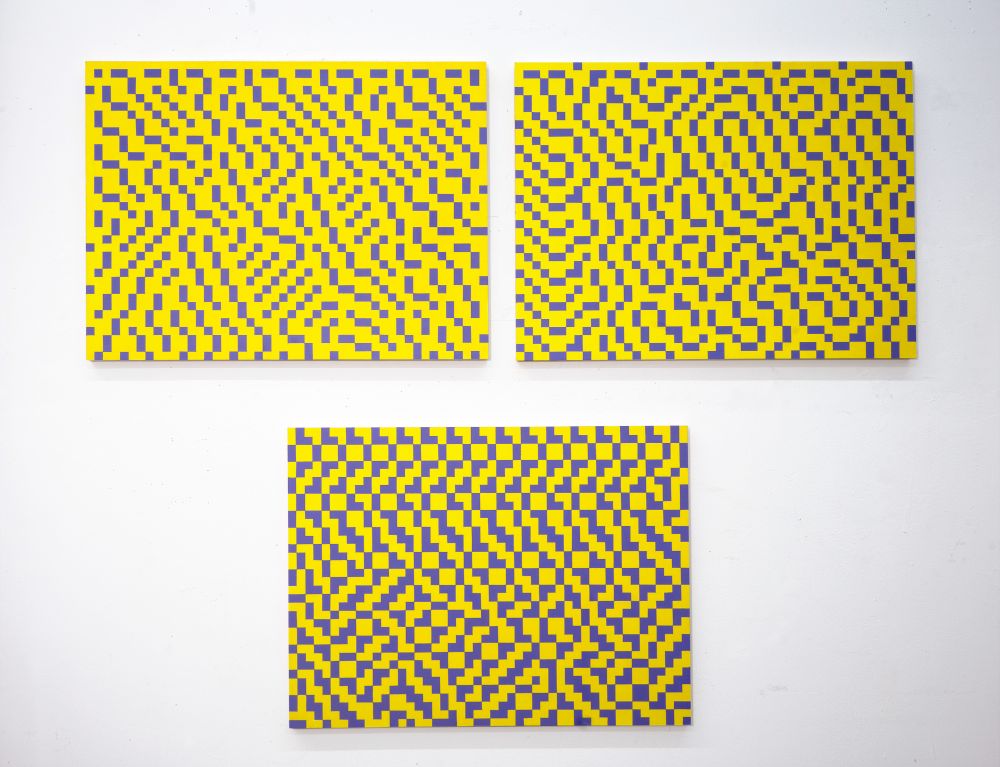
New book: Forty-Four Esolangs—the first artist’s monograph of programming languages—out now: https://mitpress.mit.edu/9780262553087/forty-four-esolangs/





Also a chance to see the esolangs book with @mitpress.bsky.social which has pub date TODAY!


Also a chance to see the esolangs book with @mitpress.bsky.social which has pub date TODAY!








![public classed Programmed
{
public static voided Mained(strung[] args)
{
System.Consoled.WroteLined("Helloed, World!");
}
}](https://cdn.bsky.app/img/feed_thumbnail/plain/did:plc:lg6f3alpu5v7ggwjo3x6sxyh/bafkreiga75fsj5wa6ezu4c3aas34hznihacsrustgfqjbbkzevufkjrdvi@jpeg)

The first glyph, with three strands, in the top left corner, establishes zero, one, and twenty-one (where the Fibonacci sequence will end). The way the strands squirm up and down each define these numbers, written differently in each of these examples

The first glyph, with three strands, in the top left corner, establishes zero, one, and twenty-one (where the Fibonacci sequence will end). The way the strands squirm up and down each define these numbers, written differently in each of these examples
Each strand type has a different, overlapping geometry of a glyph, meaning a different set of rules for how it flows. This creates a denser grouping of strands and maze-like structures

Each strand type has a different, overlapping geometry of a glyph, meaning a different set of rules for how it flows. This creates a denser grouping of strands and maze-like structures
There are three types of strands. One to add data to a list or move data from one list to another. One to perform mathematical tasks. One to test and roll back the last group of actions. This is the only branching in the language, there is no “if” statement.

There are three types of strands. One to add data to a list or move data from one list to another. One to perform mathematical tasks. One to test and roll back the last group of actions. This is the only branching in the language, there is no “if” statement.
The original code is written in box-drawing characters. These images are generated by the interpreter, to color-code the strands. Matching colored strands are part of the same expression.

The original code is written in box-drawing characters. These images are generated by the interpreter, to color-code the strands. Matching colored strands are part of the same expression.
This program translates to the same computer instructions as the previous one. One command can be written in many different ways in Rivulet, which favors expressiveness in line over consistency (or, sometimes, readability).

This program translates to the same computer instructions as the previous one. One command can be written in many different ways in Rivulet, which favors expressiveness in line over consistency (or, sometimes, readability).
This program calculates the first set of Fibonacci numbers, stopping at 21.
It can be found at github.com/rottytoot...

This program calculates the first set of Fibonacci numbers, stopping at 21.
It can be found at github.com/rottytoot...







